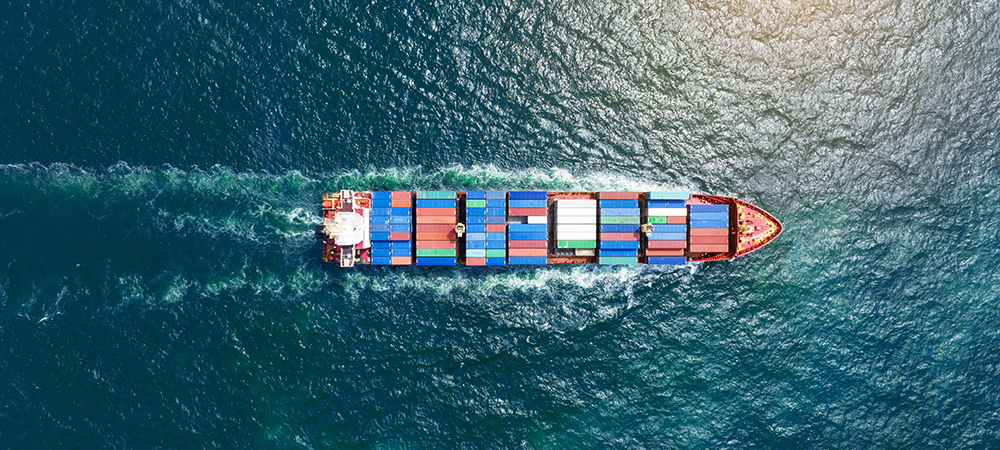Maritime transport currently contributes to 3% of global greenhouse gas emissions, which amounts to a staggering 1,708 million metric tons.
While shipping is a critical component of global supply chains, it also accounts for 3% of the world’s greenhouse gas emissions. Addressing the urgent need for action, Arthur D. Little (ADL) presents actionable strategies for the maritime industry to adopt more sustainable practices with a focus on reducing emissions in a new viewpoint titled ‘Cleaner Seas: Mitigating Maritime Emissions’.
According to recent analysis by ADL, maritime transport contributes to 3% of the world’s greenhouse gas emissions, amounting to 1,708 million metric tons of emissions. Without measures to control this increase, ADL predicts that this figure could rise to 44% by 2050. Recognising the urgent need to address emissions, the International Maritime Organization (IMO) has set ambitious goals for reducing greenhouse gas emissions in the maritime industry. The IMO initially aimed for a 50% reduction in emissions by 2050 but is now pushing for the industry to reach net-zero emissions by that same year.

As part of these efforts, the IMO has introduced a plan for a minimum of 5% of energy used by international shipping to come from alternative fuels or energy sources, with a goal of reaching 10% by 2030.
Paolo Carlomagno, Partner and a senior member of the Travel and Transportation practice at Arthur D. Little, said: “The maritime sector plays a pivotal role in the global effort to achieve net-zero emissions. Our efforts to address maritime emissions must be swift and bold in order to combat the looming threat of climate change through a collaborative approach. Our latest viewpoint aims to highlight the importance of sustainable practices and encourage stakeholders across the value chain to embrace carbon-reduction solutions. Alternative fuels and technological innovations are critical components of this strategy, but we must also address challenges around scalability and environmental impact. With unwavering commitment and innovative thinking, we can chart a course towards a cleaner and more sustainable future for the maritime industry and our planet.”
Scaling up green fuels and transforming maritime operations
As part of its commitment to driving the sustainability agenda in the maritime industry, ADL provides innovative solutions and expertise to help address the challenges posed by maritime emissions. To combat emissions and facilitate greener practices, the viewpoint advocates for the adoption of alternative fuels, such as green fuels (biodiesel, bio-methane, and bio-methanol) and e-fuels (e-methane, e-methanol, green ammonia and hydrogen).
In the short term, blue methanol, ammonia, and hydrogen can offer decarbonization benefits, cutting emissions by 20% to 60%. However, these fuels are not sustainable in the long term as they are fossil-based. A better solution lies in the usage of green fuels, such as biodiesel, bio-methane, and bio-methanol, which can reduce emissions by 60% to 80%. While there are challenges regarding their environmental impact and scalability, efforts should be made to encourage shipping companies to use more green fuels, while incentivizing producers to increase production.
In addition to alternative fuels, the viewpoint highlights the importance of technological innovations to improve operational efficiency in existing assets. Onboard carbon capture and storage (CCS) systems, for example, have shown promising results by trapping more than 60% of a ship’s CO2 emissions. Technical innovations such as wind-assist propulsion, and the use of solar panels and fuel cells are highlighted as key strategies to minimize fuel consumption and decrease emissions. Other innovations, such as kite-sail systems and improved hull designs, can significantly reduce fuel consumption by 20% to 40% and up to 8%, respectively.
The viewpoint delves into voluntary measures being employed by stakeholders, showcasing initiatives such as emission-trading systems, internal carbon pricing, and carbon-reduction services offered by shipping carriers. It also mentions the forward-thinking approach of Singapore, which aims to become the world’s largest automated terminal by 2040 and ensure that at least half of all Singapore-flagged vessels are ‘green’ by 2050.
Click below to share this article

